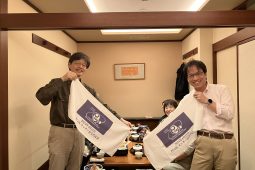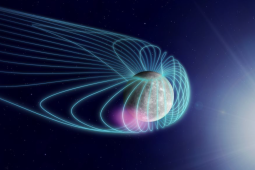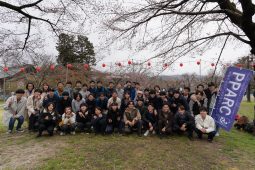PPARCセミナー(2023/11/17)

PPARCセミナー(2023/11/17)
(1)
[Name]
Hajime Ohata
[Title]
Evaluation of a method to retrieve temperature and wind velocity profiles of the Venusian nightside mesosphere from mid‑infrared CO2 absorption line observed by heterodyne spectroscopy: Review
[Abstract]
They evaluated a method for retrieving vertical temperature and Doppler wind velocity profiles of the Venusian nightside mesosphere from the CO2 absorption line resolved by mid-infrared heterodyne spectroscopy. The achievable sensitive altitude and retrieval accuracy were derived with multiple model spectra generated from various temperature and wind velocity profiles with several noise levels. The temperature profiles were retrieved at altitudes of 70–100 km with a vertical resolution of 5 km and a retrieval accuracy of ± 15 K. The wind velocity was also retrieved at an altitude of approximately 85 km with a vertical resolution of 10 km and a retrieval accuracy of ± 25–50 m/s. In addition, they studied an event and applied our method to spectra obtained by the HIPWAC instrument attached to the NASA/IRTF 3-m telescope on May 19–22, 2012. Retrieved wind velocities in a latitude of 33° S at 3:00 LT were interpreted as subsolar-to-antisolar (SS-AS) flows at altitudes of 84 ± 6 km and 94 ± 7 km, and they were stronger than expected. This result suggested that the transition between the retrograde superrotational zonal (RSZ) wind and SS-AS flow may occur at altitudes below 90 km which previously was predicted to be the transition region. This work provides a basis for our analysis of further observations obtained by a mid-infrared heterodyne spectrometer MILAHI attached to the Tohoku University 60-cm telescope at Haleakalā, Hawaii.
(2)
[Name]
Fuminori Tsuchiya
[Title]
Recent updates on future exploration studies (LAPYUTA: UV space telescope & TUKUYOMI: Lunar low frequency radio observatory)
[Abstract]
I will talk about current status of two future space missions.
(1) LAPYUTA:LAPYUTA (Life-environmentology, Astronomy, and PlanetarY Ultraviolet Telescope Assembly) is a future UV space telescope, which is selected as a candidate for JAXA’s 6th M-class mission in 2023, and cover a wide range of scientific fields from planetary science to astronomy. Recent update on focal plane instrument especially high resolution spectrometer for observing exoplanet atmosphere will be presented.
(2) TUKUYOMI: Aim to Japan’s participation in the Artemis program in the 2030s in mind, we pursue the feasibility studies of lunar low frequency radio telescope for astronomical observations. The main scientific objectives are broadly covering the following three areas: astronomy and astrophysics, planetary science, and lunar science. For astronomy and astrophysics, we focus on the 21 cm global signal (spatial average temperature) observation from the Dark Ages. The design concepts of Lunar-yonder meter-wave interferometric array (TSUKUYOMI) will be presented.





